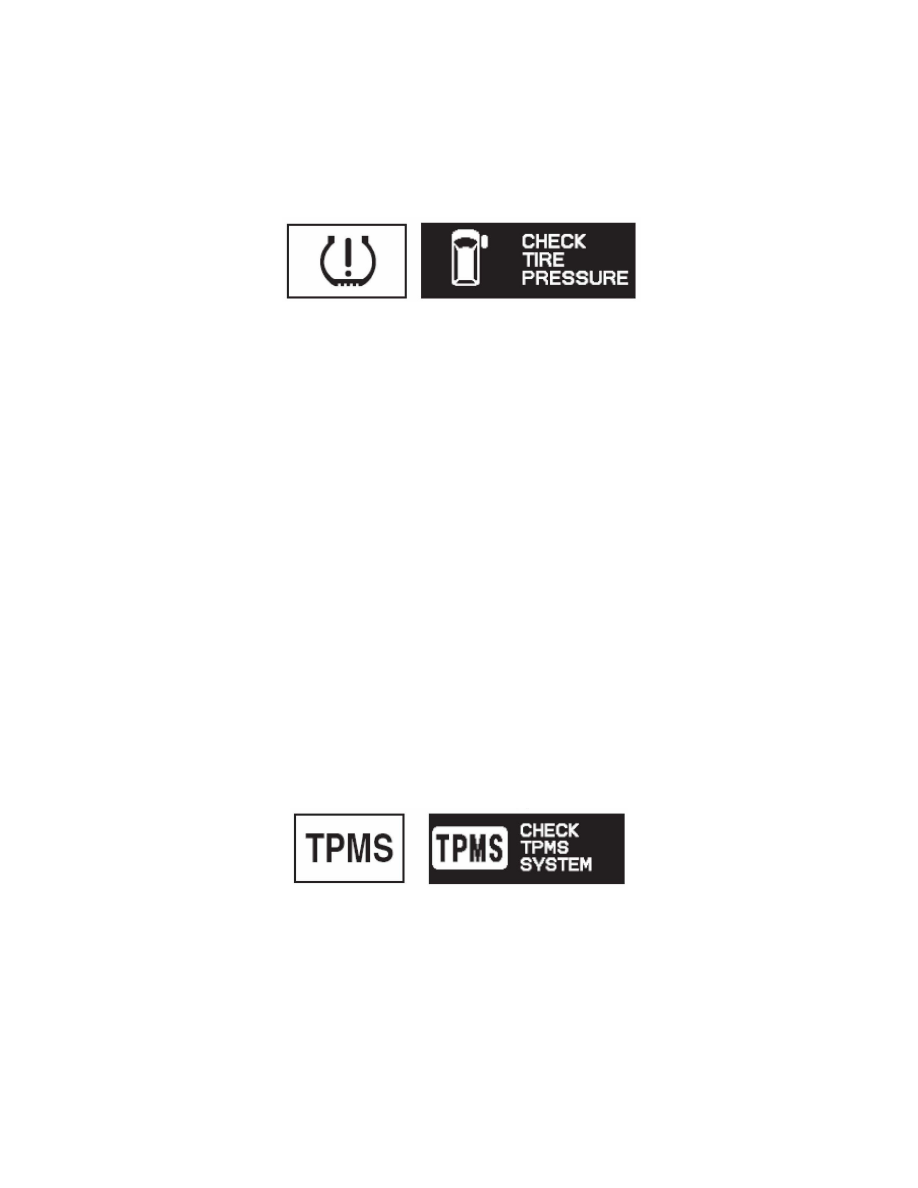Pilot 2WD V6-3.5L (2006)

Low Tire Pressure Indicator: Technical Service Bulletins
Tire Monitor System - TPMS Indicator Information
Know Your Low Tire Pressure and TPMS Indicators
NOTE:
This article applies to '05-06 Pilots, '05-06 Odyssey Touring models, and '06 Ridgelines. Do you know the difference between the low tire pressure
indicator and the TPMS indicator? Service customers sometimes get these two indicators mixed up, so they might tell the service advisor" A light
came on in my dash, and I think it's got something to do with tire pressure." If the RO doesn't clearly state which indicator is involved, knowing
which one it is could mean the difference between a simple job and a lot of wasted troubleshooting time and effort.
Low Tire Pressure Indicator - This icon indicator comes on when the tire pressure is 25% below its recommended value listed on the driver's doorjamb
sticker. (On Odysseys, you'll also see a CHECK TIRE PRESSURE message in the MID.) This value is always the recommended cold inflation value.
When this indicator comes on, the TPMS control unit sets one or more of these DTCs:
^ TPMS DTC 11 (right-front low tire pressure)
^ TPMS DTC 13 (left-front low tire pressure)
^ TPMS DTC 15 (right-rear low tire pressure)
^ TPMS DTC 17 (left-rear low tire pressure)
If this is the indicator the RO says came on, check the tire pressure against its recommended value. Check for a leak if you suspect there might be one;
otherwise, set the tire pressure accordingly. Always check tire pressures when the tires are cold, and make sure you're using an accurate tire pressure
gauge when you do. Accuracy can sometimes be an issue with these gauges, so it's a good idea to calibrate your tire pressure gauge often.
If the RO isn't clear about whether this indicator came on, and you don't see it on, a quick check with the HDS for TPMS DTC 11, 13, 15, or 17, will tell
the story.
Something else to keep in mind: Colder weather means lower tire pressures. A 10°F change in tire temperature changes tire pressure by 1 psi. If the tire
pressure was already below its recommended value~even by only 2O%~a big dip in
temperature could cause the indicator to come on. Here's a typical scenario to show just what we're talking about. The tire temperature was warm from
driving (90°F) when the tire pressure was checked and set it to its recommended value. Your customer then parked the vehicle outside and the outside
temperature and the tire temperature plummeted to 10°F. This 80°F drop in tire temperature causes a corresponding 8 psi drop in tire pressure. If the tire
pressure gauge was off by + 1 psi, now you're dealing with a 9 psi change in tire pressure. This will cause the low tire pressure indicator to come on and
the TPMS control unit to set a TPMS DTC. When the tire heats up from driving, the tire pressure rises and the indicator will go off. In cold weather, this
could happen a lot.
TPMS Indicator - This text indicator comes on and stays on when there's a definite problem with the TPMS as a system. (On Odysseys, it's a CHECK
TPMS SYSTEM message in the MID.)
The TPMS shuts off and stops monitoring tire pressures. If this indicator or message is on, use the HDS to check for set TPMS DTCs in the TPMS
control unit and troubleshoot accordingly.
